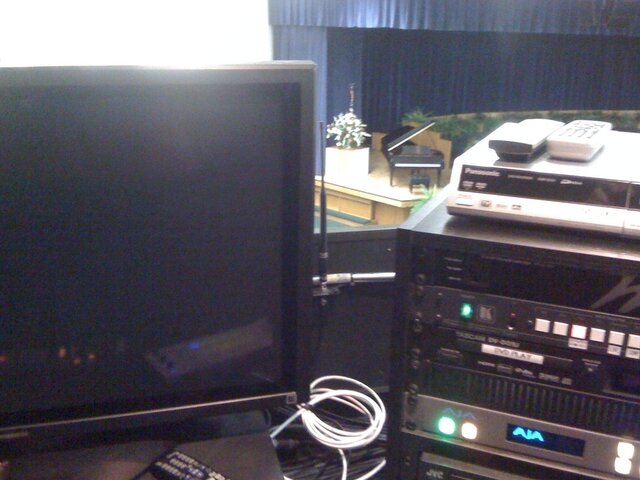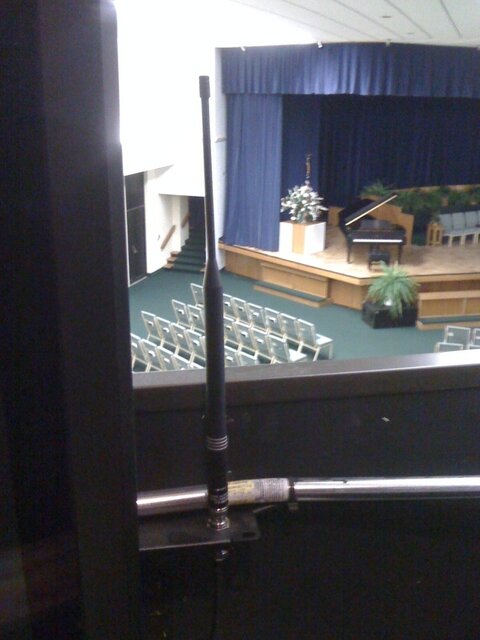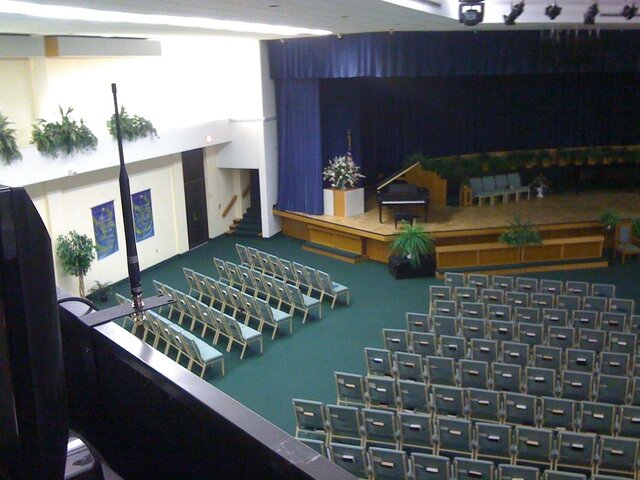I'm having RF dropouts with Shure SLX bodypacks. The handhelds work fine. I run 8 SLX4 receiver units in the H5 (518-542 MHz) bandwidth. The antennas are run through a passive splitter to feed both distribution amps. The distance from the pulpit to the booth is approximately 150 feet.
Upon examination of the antenna system, I noticed two things.
First, the antenna is partially obstructed. My common sense tells me this isn't good, but then maybe its not a big deal. Check out the pictures below, and gimme your thoughts on why a reputable installer would do this.


I decided to try a different mount position with the other antenna. I took some spare rack components and came up with this. Would this be beneficial or is this a wasted effort? See below.

Second, I noticed that the antenna is model UA820A (774-865 MHz). Were the wrong antennas installed? My common sense tells me that an antenna would pick up more gain if its tuned closer to the frequency its receiving. I did some poking around and found that Shure makes a UA820H4 (518-574 MHz) antenna. Would it make much of a difference if I installed these instead?
Thank you for your much needed RF wisdom.
Rhett
Upon examination of the antenna system, I noticed two things.
First, the antenna is partially obstructed. My common sense tells me this isn't good, but then maybe its not a big deal. Check out the pictures below, and gimme your thoughts on why a reputable installer would do this.


I decided to try a different mount position with the other antenna. I took some spare rack components and came up with this. Would this be beneficial or is this a wasted effort? See below.

Second, I noticed that the antenna is model UA820A (774-865 MHz). Were the wrong antennas installed? My common sense tells me that an antenna would pick up more gain if its tuned closer to the frequency its receiving. I did some poking around and found that Shure makes a UA820H4 (518-574 MHz) antenna. Would it make much of a difference if I installed these instead?
Thank you for your much needed RF wisdom.
Rhett


